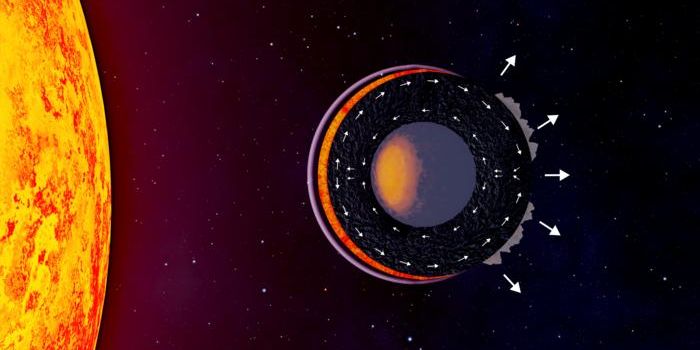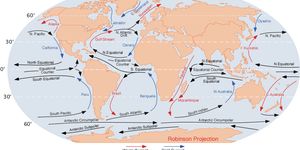A Young Planet's Turbulent Early Life: The Case of AU Mic b
How do young planets form around young stars? This is what a recent study published in The Astrophysical Journal hopes to address as a team of researchers led by Dartmouth University examines the strange reasons behind the escaping atmosphere of a young Neptune-sized exoplanet. The planet, AU Mic b, is located approximately 32 light-years away and orbits a 23-million-year-old star, AU Microscopii, in just 8.46 days, also known as a “hot Neptune”, and which is only 10 percent the distant from Mercury to our own Sun.
Due to the star’s young age, which is only 0.5 percent the age of our own Sun at 4.6 billion years old, this study holds the potential to help astronomers better understand the formation and evolution of young planets around young stars.
Artist illustration of the exoplanet, AU Mic b, losing its atmosphere as it orbits its parent star, AU Microscopii. (Credit: NASA, ESA, Joseph Olmsted, STScI)
Finding exoplanets so close to their parent stars, along with their escaping atmospheres, is not uncommon. What makes this finding puzzling is that AU Mic b’s atmosphere isn’t escaping at a constant rate, as astronomers observed normal activity during one orbit, followed by a violent outburst of its atmosphere during the next orbit.
"This is the first time we've seen a planet’s atmospheric escape go from unobservable to very, very observable," said Keighley Rockcliffe, who is a PhD Candidate in the Department of Physics and Astronomy at Dartmouth University, and lead author of the study. "In addition, the hydrogen cloud was not a tail behind the planet like we normally see, but like a puff in front of the planet as it orbited. We don't usually think of planets as burping hydrogen as they go around a star."
While AU Mic b was discovered by NASA’s TESS and Spitzer space telescopes in 2020, this most recent study was conducted using NASA’s Hubble Space Telescope, and more specifically, the Space Telescope Imaging Spectrograph installed on Hubble.
For the study, the team observed what’s known as nondetection during their first observation of AU Mic b, but then observed its hydrogen atmosphere escaping into space in front of the planet during their second observation. They calculated the escaping atmosphere was moving away from the star at 61.26 kilometers per second (38.07 miles per second).
Dr. Elizabeth Newton, who is an Assistant Professor of Physics and Astronomy at Dartmouth, and a co-author on the study, noted that traditionally studying older planets makes it difficult to study planetary evolution, and she likens to trying to study developmental psychology by examining only adults.
"This planet is like observing a totally generic toddler," said Dr. Newton. "Systems like AU Mic are our insight into the broader planetary-evolution process. Keighley is making very challenging observations, and there are limited opportunities to even attempt them."
The researchers note in the study that future observations are necessary to learn more about the system, which could lead to a better understanding of interactions between solar wind and a planet’s atmosphere.
What new discoveries will astronomers unlock about AU Mic b and other young planets in the coming years and decades? Only time will tell, and this is why we science!
As always, keep doing science & keep looking up!
Sources: The Astrophysical Journal, EurekAlert!, NASA, Wikipedia, UC Santa Cruz, Dartmouth University, Nature









